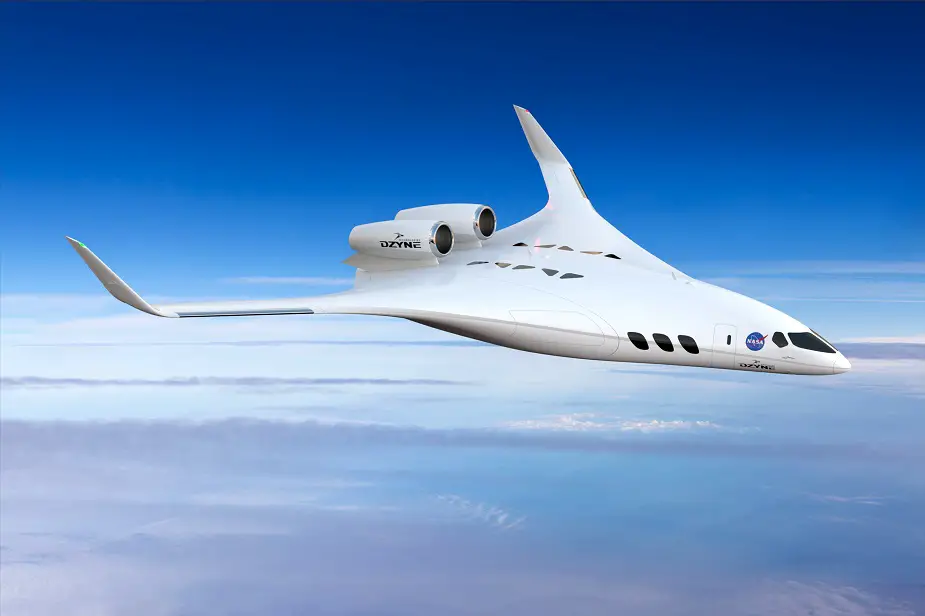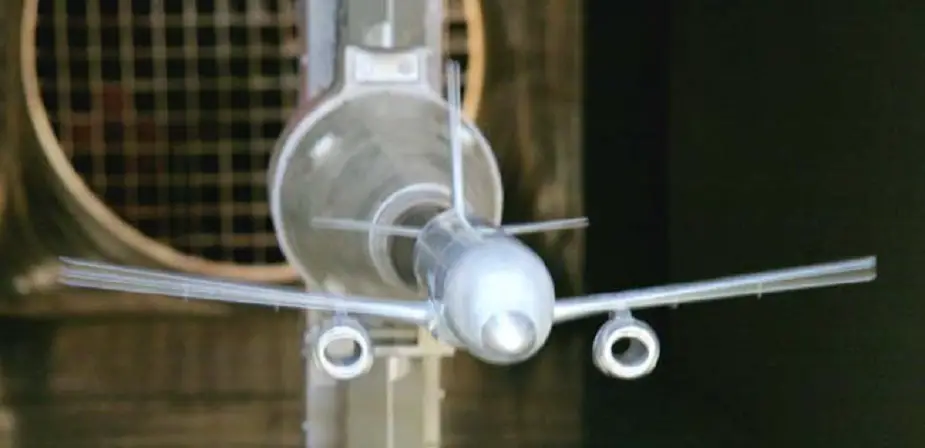The Central Aerohydrodynamic Institute (TsAGI) continues to design prospective hybrid wing body aircraft. An upgraded aerodynamic model is ready for trials, the institute said.
 A blended wing body (BWB), Blended body or Hybrid Wing Body (HWB) is a fixed-wing aircraft having no clear dividing line between the wings and the main body of the craft. For illustration, Dzyne Technologies’ regional-sized blended wing body design concept. Actual design for TsAGI's hybrid wing body aircraft is for now unknown. (Picture source: NASA/DZYNE Technologies/Brendan Kennelly)
A blended wing body (BWB), Blended body or Hybrid Wing Body (HWB) is a fixed-wing aircraft having no clear dividing line between the wings and the main body of the craft. For illustration, Dzyne Technologies’ regional-sized blended wing body design concept. Actual design for TsAGI's hybrid wing body aircraft is for now unknown. (Picture source: NASA/DZYNE Technologies/Brendan Kennelly)
The institute has been engaged in the project for several years in the framework of Liniya and Magistral-technologii R&D. A special model has been tested in wind tunnels with various locations of power plants and tail fin geometry. The experiments showed unfavorable interference of the upper location of engine nacelles.
The institute continued to optimize the aerodynamic design of the hybrid wing and eliminate unfavorable effects of nacelle, pylon and wing interaction.
“The new configuration focused on the fuselage to increase the number of passengers and improve aerodynamic interference with engines on the upper side of the center wing,” TsAGI head of the aerodynamic department Ivan Chernyshev said.
The institute produced the prospective design in steel and aluminum alloys. The model has a scale of 1:33.3. It is over a meter long and has a wingspan of 1.8 meters. The monolith unit is a massive center wing with docked wing consoles and V-shaped two-keel tail fins. The production of the hybrid wing did not pose major problems due to a small number of units (93).
Trials of the hybrid wing will begin shortly in T-128 transonic wind tunnel. Scientists will study its integral aerodynamic characteristics at cruising regimes and without engine nacelles to determine the quantity of aerodynamic interference. Visualization of the flow is to be held.
T-128 is a continuous-running, variable density wind tunnel designed for investigation of aircraft models at subsonic, transonic and supersonic velocities. The main compressor with electric drive of 100 MW generates the flow.
The wind tunnel is equipped with four interchangeable test sections, three of which have variable wall perforation (up to 128 independently controlled panels with perforation ratio varying from 0 to 18% according to the computer program). The fourth test section has slotted walls with porosity degree 0-14%.
The test sections are equipped with suspension systems of all the basic types (rigid strut with rear sting, strip suspension, model side wall mounting and half-model wall mounting), device for mounting “infinite span” wing and “swept” wing, and facility for staging investigation.
The wind tunnel is also equipped with a set of internal and external strain-gauge balances for measuring aerodynamic forces and moments of the models and their structural elements, automated computational system and control complex.
 The wind tunnel T-128 is used for investigating different models of airspace vehicles, rockets, civil and military aircraft of various purposes (Picture source:TsAGI)
The wind tunnel T-128 is used for investigating different models of airspace vehicles, rockets, civil and military aircraft of various purposes (Picture source:TsAGI)
© Copyright 2020 TASS. All rights reserved. This material may not be published, broadcast, rewritten or redistributed.
















